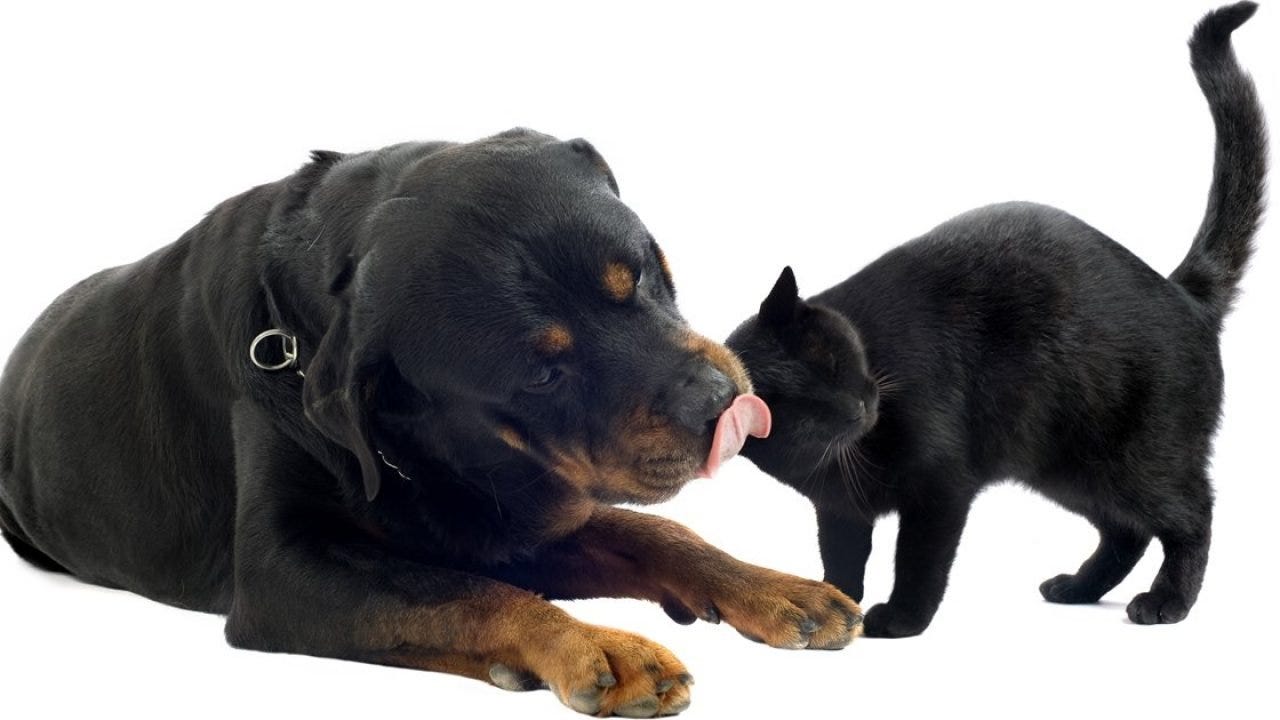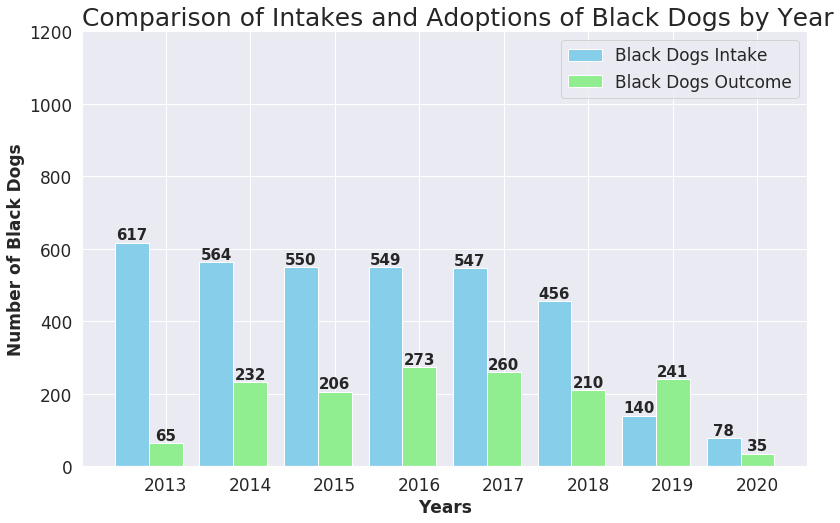Do Black Cats Get Passed Up in Shelters the Most
Black Dog and Black Cat Syndrome — Myth or Reality?
Statistics of cats and dogs being adopted by color at the shelters. Why black-colored animals are overlooked by adopters
![]()

Introduction
The black cat and black dog syndrome was established in the early 2000s by the American Society for t he Prevention of Cruelty to Animals (ASPCA). It was described as a phenomenon that dark-coated pets are overlooked most of the time by adopters in favor of animals with lighter fur hues. It happens usually due to people's beliefs, superstitions and associations. Black dogs, especially big ones, usually characterized as frightening and aggressive in films, books and other media. Black cats are also surrounded by a different kind of superstition and associated with witchcraft. In general, society correlates black color with evil and bad fortune.
The main Question: Do black cats and dogs get passed over at animal shelters?
The Data
The two datasets: Animal Intakes and Animal Outcomes were taken from Austin Animal Shelter website data.austintexas.gov
Animal Intakes dataset has 115,612 entries and 12 features
Animal Outcomes dataset has 115,778 entries and also 12 features
I started with cleaning up the data and removing the features that are not significant for my observations. I also excluded other animals types from datasets. During the exploratory analysis, I filtered out 24 most popular fur colors among cats and dogs for further exploration and comparison.
I plotted my findings on a counter plots to see the quantity and percentage of cats and dogs incoming to and being adopted from the shelter.


It is shown in both cases that there are more animal intakes than outcomes, as it was expected. Also, the most common cat colors intakes are brown tabby and black, and the most common dog colors intakes are black/white and brown/white. Black-colored dogs are on the 4th place by percent intakes.
Does the color matter?
To see if adoptions really depend on animal colors, I performed the chi-squared tests. The tests with extremely low p-value close to zero showed that adoption of cats and dogs is very dependent on fur color.
The next step was to find the percentage of cats and dogs being adopted on average by color.


The bar plots above show that black cats and dogs are being adopted on average of 43.2% and 43.5% respectively. Not so bad for black animals, considering that percentage is higher than for some other animal colors such as white for cats (33.3%) and chocolate for dogs (34.4%)
Black Dog and Black Cat Appreciation Day
Black Cat and Black Dog Appreciation Days were founded in 2013–2014 and they have different heartbreaking stories behind them. The main idea is to highlight and appreciate animals with the black color, and encourage people to adopt them. Most shelters and animal centers throughout the United States started doing the promotion of black pets by waving the adoption fees and including some benefits for adopters. To increase adoptions of black pets, promotions take place in July-August for black cats, since Black Cat Appreciation Day is on August 17 and October for black dogs, since Black Dog Appreciation Day is on October 1.
Did Black Pet Promotion really increase the numbers of black pets being adopted?
For this observation, I filtered only black-colored animals and used lollipop plots to visualize the numbers of adoptions by months.


It looks like promotions for cats indeed increase the numbers of black cats being adopted in July and August, however for black dogs promotions don't influence the numbers of them being adopted. Another interesting trend is seasonal adoption. Most cats are being adopted in the summer and dogs in the winter.
Further Exploration
In virtue of black-colored animal promotions by shelters the adoption rate of black cats and dogs increased since 2013. Moreover, the number of intakes of black pets decreased through 2013–2019.


How much time dogs and cats spend before adoption by color
The graphs below show that on average animals do not spend more than a year in the shelter before being adopted, however, there are a lot of outliers. We can see that more outliers among the dogs, it is because the dogs have a harder process of adoption than cats.


In Conclusion
To summarize my observations and data analysis I can conclude that black cats and dogs had a hard time being adopted and almost always were overlooked. People tended to adopt animals with lighter and brighter fur colors. The black cat and black dog syndrome was real, however, it was in the near past.
Current data analysis revealed that almost 45% of all black pets are being adopted thanks to promotions and people being educated that black dogs and black cats are as friendly, as loving, as cute, and as loyal as dogs and cats of any other color and that they should be adopted.

Note:
This project was done for Lambda School as part of the Data Science curriculum.
Link to source code:
Github repository Black Cats and Black Dogs Syndrome Analysis
Do Black Cats Get Passed Up in Shelters the Most
Source: https://towardsdatascience.com/black-dog-and-black-cat-syndrome-myth-or-reality-819dc4e616f1
0 Response to "Do Black Cats Get Passed Up in Shelters the Most"
Post a Comment